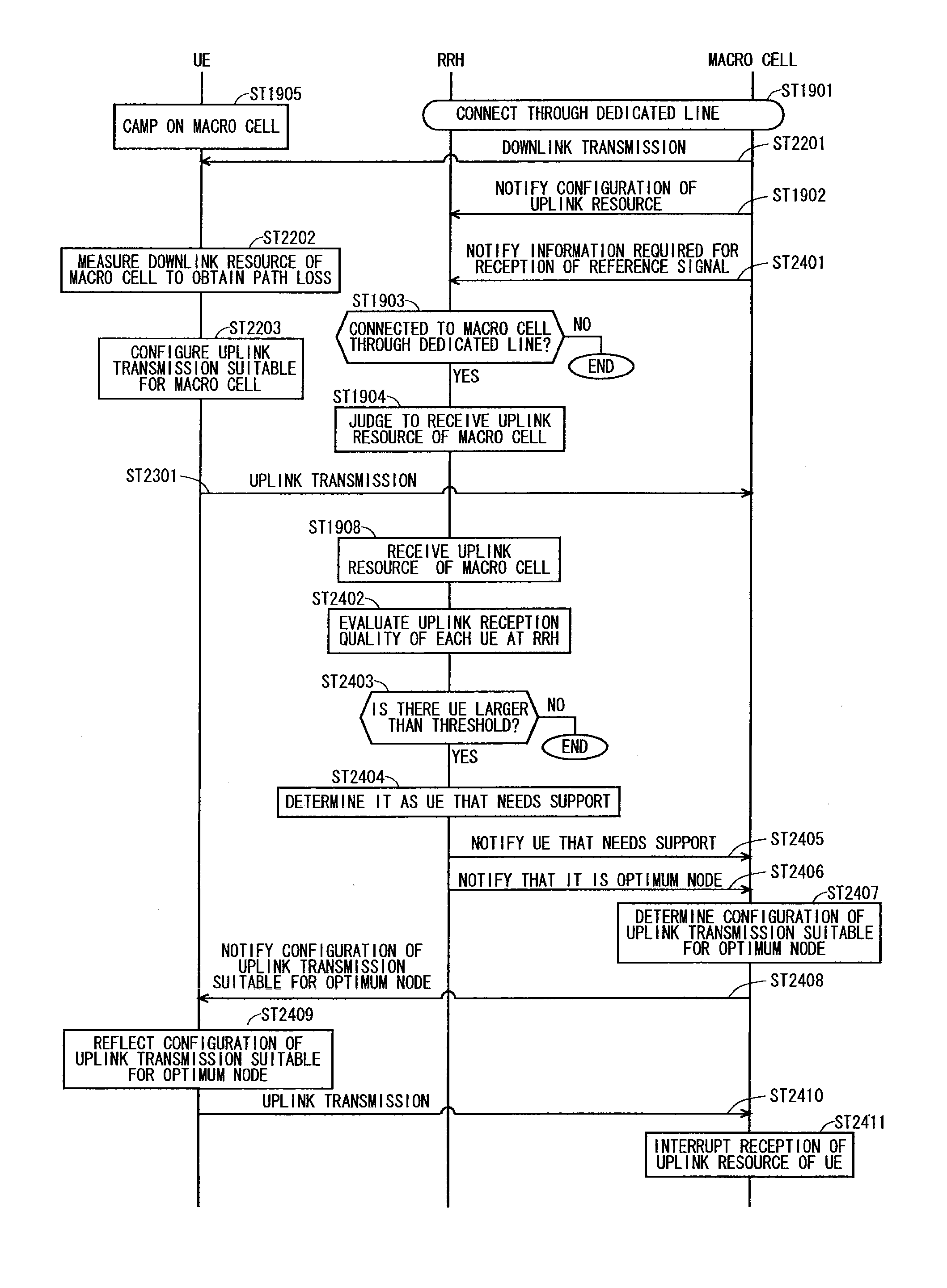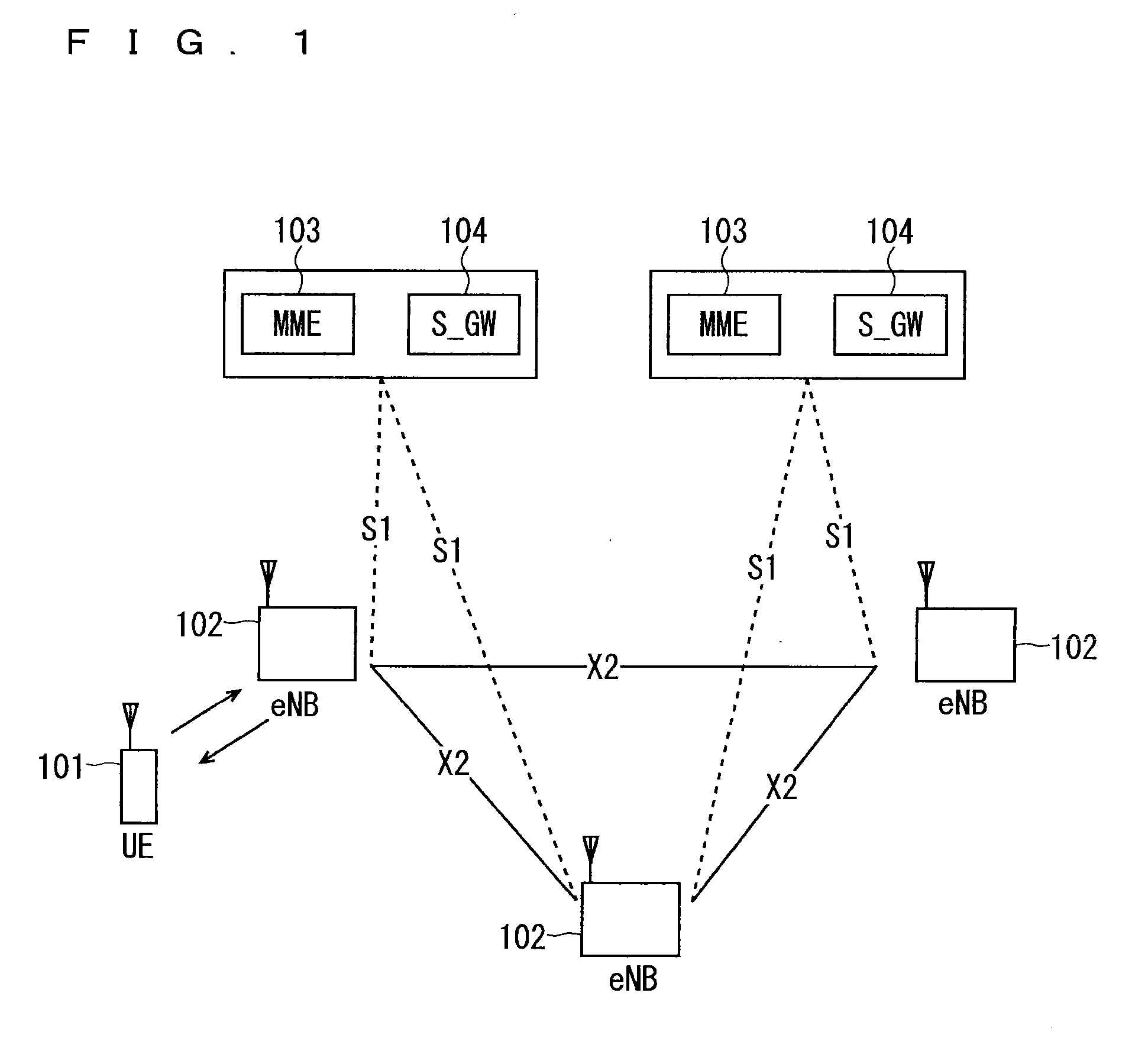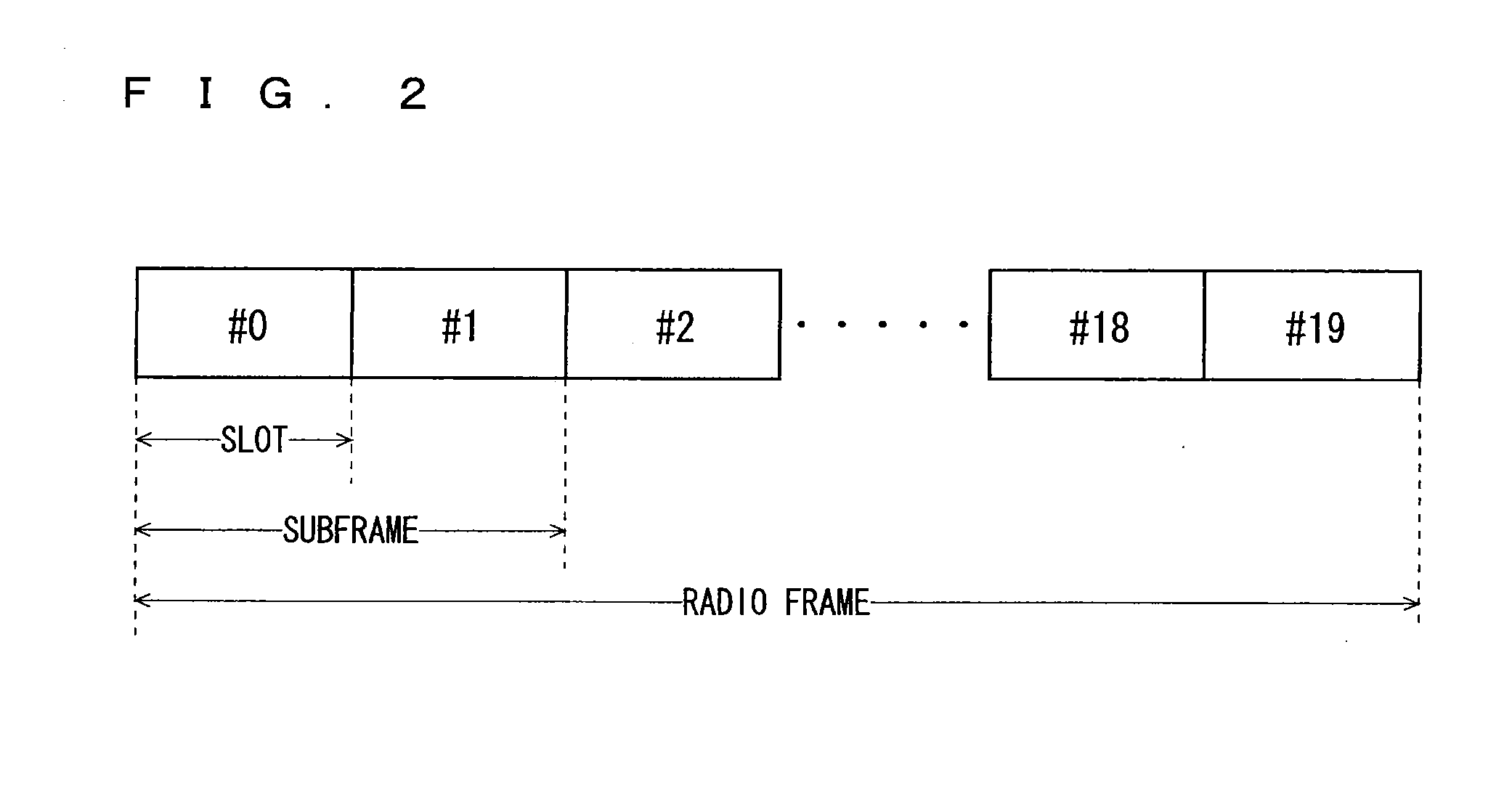Communication system
a communication system and communication technology, applied in the field of communication systems, can solve problems such as interference from user equipment to local nodes, radio link failure (rlf), and collision risk of rach, and achieve the effects of reducing interference, improving the throughput of the entire communication system, and large uplink transmission power
- Summary
- Abstract
- Description
- Claims
- Application Information
AI Technical Summary
Benefits of technology
Problems solved by technology
Method used
Image
Examples
first embodiment
[0138]FIG. 7 is a block diagram showing an overall configuration of an LTE mobile communication system, which is currently under discussion of 3GPP. Currently, an overall system configuration including closed subscriber group (CSG) cells (Home-eNodeBs (Home-eNB; HeNB) of E-UTRAN, Home-NB (HNB) of UTRAN) and non-CSG cells (eNodeB (eNB) of E-UTRAN, NodeB (NB) of UTRAN, and BSS of GERAN) is studied in 3GPP and, as to E-UTRAN, the configuration as shown in FIG. 7 is proposed (see Chapter 4.6.1 of Non-Patent Document 1).
[0139]FIG. 7 is described. A user terminal device (hereinafter, referred to as “user equipment” or “UE”) 71 is capable of performing radio communication with a base station device (hereinafter, referred to as “base station”) 72 and transmits / receives signals through radio communication. The user terminal device is equivalent to a communication terminal device. The base stations 72 are classified into an eNB 72-1 that is a macro cell and a Home-eNB 72-2 that is a local nod...
second embodiment
[0303]A problem to be solved in a second embodiment is described below. Even in cases where the first embodiment and the first modification of the first embodiment are used, another problem may occur. This problem is described with reference to FIG. 17 described above.
[0304]As described above, in the area Z between the point A and point B shown in FIG. 17, a link between the user equipment (UE) and RRH 1603 is good in uplink, and a link between the UE and macro cell 1601 is good in downlink. An imbalance in link, that is, link imbalance occurs as described above.
[0305]In the conventional technique, the user equipment camps on a cell having the best downlink reception quality, and thereafter, starts communication with the cell as required (see Non-Patent Document 3). Accordingly, in the conventional technique, a situation in which an optimum link is not used in uplink communication occurs in, for example, the area Z between the point A and point B shown in FIG. 17. In this case, the ...
third embodiment
[0436]A third embodiment discloses another solution to the same problem as that of the first embodiment and second embodiment described above. The solution in the third embodiment is described below. Carrier aggregation is performed using an uplink component carrier of an optimum node in uplink without using downlink component carriers thereof. Alternatively, carrier aggregation is performed using a downlink component carrier and an uplink component carrier of a macro cell and an uplink component carrier of the optimum node in uplink. Still alternatively, a component carrier of the optimum node for uplink is used in uplink of a secondary cell (SCell).
[0437]The concept of the solution in the third embodiment is described with reference to FIG. 25. FIG. 25 is a diagram for describing the concept of the solution in the third embodiment.
[0438]A macro cell 2501 includes a DL_CC1 indicated by reference numeral 2502 and a DL_CC2 indicated by reference numeral 2503 as downlink component car...
PUM
 Login to View More
Login to View More Abstract
Description
Claims
Application Information
 Login to View More
Login to View More - R&D
- Intellectual Property
- Life Sciences
- Materials
- Tech Scout
- Unparalleled Data Quality
- Higher Quality Content
- 60% Fewer Hallucinations
Browse by: Latest US Patents, China's latest patents, Technical Efficacy Thesaurus, Application Domain, Technology Topic, Popular Technical Reports.
© 2025 PatSnap. All rights reserved.Legal|Privacy policy|Modern Slavery Act Transparency Statement|Sitemap|About US| Contact US: help@patsnap.com



